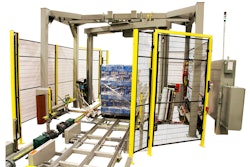
When it comes to supply chain challenges, many companies are using technology to attack the symptoms instead of the problem.
Yet, while the FDA’s new blueprint calls for more technology, if companies continue to use technology to address “symptoms,” they won’t solve the underlying problems that compound food safety.
The problem is that most don’t have a single source of truth for the thousands of specifications that exist across their supply chain. Many only go as deep as managing a bill of materials and ignore the underlying specifications. Only by solving for specification management can companies begin to treat the root cause rather than symptoms.
Specifications define how something is made or how it should operate. Raw materials, ingredients, formulas, bill of materials, artwork, packaging, certificates of analysis, even machines have specification data.
Today, specifications are scattered and even duplicated across supply chains. They live in excel spreadsheets, shared drives or reside with suppliers. Even when some of this data lives in an enterprise resource planning (ERP) system, there is still an explosion of spreadsheets that manages the more granular details. This results in information silos, which leads to tremendous waste and inefficiencies.
This pain is typically felt by frontline supply chain workers, including those in quality, packaging, product development and engineering.
But, the Coronavirus disease (COVID-19) has brought awareness of this problem to the c-suite, as leaders struggle to adapt or transition production across their networks.
Technology leaders are beginning to understand that specifications are a strategic priority and that you can’t have supply chain traceability without specification management.
In the FDA’s 20-page report, specifications aren’t mentioned. Not even once.
The report alludes to the “standardization of critical tracking events and key data elements.”
In not defining these key data elements, companies will continue to repeat the cycle of using technology to solve the symptoms and not the problem.
The key to being able to perform root cause analysis is being able to get the DNA-level data - the specifications. The key to automation is being able to ingest and score data inputs from suppliers or facilities to the master spec.
For instance, let’s say a company used a spec-first approach to identify a quality issue at a co-manufacturer. But, they forgot to service a machine that was causing minor bottle defects. Getting to the root of the problem helped this company trace the issue through specifications linked to lot codes and facilities in just a few clicks.
Blockchain, artificial intelligence (AI), automation -- all of these technologies have the ability to transform the way things are made. But, these technological inventions are not the solution in and of themselves.
Blockchain is the how, not the what.
The power of blockchain-backed specifications is eliminating the sharing of critical information over email. It’s digitizing the change and approval history in an immutable ledger to create unparalleled traceability.
It’s making sure that brands, suppliers, manufacturers and other stakeholders are on the same page. Companies don’t need to leap to blockchain to achieve this.
Only when companies start by managing specifications - the smallest form of big data - can they start to layer on emerging technologies like blockchain and automation to drive true traceability and transformation.
The FDA’s blueprint is a step in the right direction. But, companies should evaluate their technology ecosystem to make sure they’re solving problems and not just chasing the latest technology trends.



















